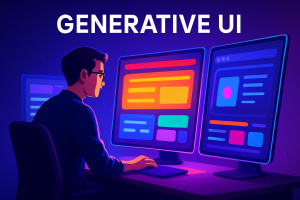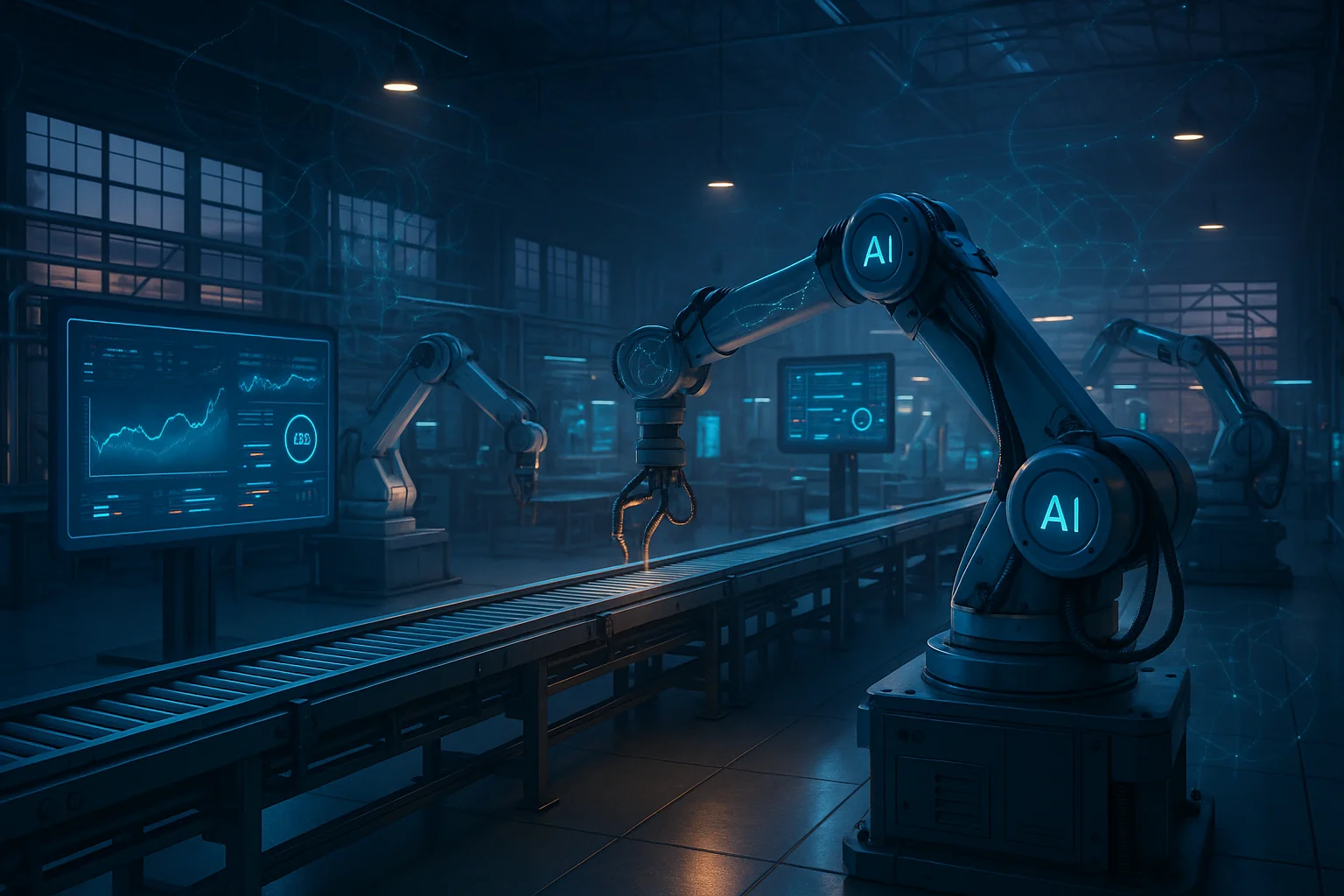 For years, building great digital products has meant long design cycles, countless revisions, and endless debates about layouts, colors, and user flows. UI and UX have always been at the heart of the experience — but the process itself is often slow, expensive, and a little exhausting.
For years, building great digital products has meant long design cycles, countless revisions, and endless debates about layouts, colors, and user flows. UI and UX have always been at the heart of the experience — but the process itself is often slow, expensive, and a little exhausting.
Now, a shift is starting to take place in how we think about design. With Generative UI, interfaces don’t have to be built element by element anymore, they can adapt and take shape automatically with the help of AI. Instead of getting stuck in the details, designers get to spend more time on the bigger picture, while the system fills in the groundwork.
What is Generative UI?
Generative UI is all about letting AI handle the groundwork of design. Instead of spending hours tweaking layouts or building every screen from scratch, these systems can pull together ready-made elements — buttons, menus, and flows — in a way that matches the project’s needs.
It’s a big shift from the old way of doing things, where every interface was carefully coded or drawn out step by step. With generative design, the interface can adjust and reshape itself on the fly, giving teams more flexibility and speed.
Picture this: you tell the system, “Make me a simple login page with an option for Google or Facebook sign-in.” In seconds, you’ve got multiple clean drafts to work with — the kind of work that might normally take a designer half a day.
Why Everyone is Talking About Generative UI
In the past year, Generative UI has started popping up everywhere — from design blogs and tech newsletters to panels at big conferences. What began as a niche idea is now turning into one of the most discussed topics in product design.
Part of the buzz comes from curiosity. People want to know if this is just another passing trend or a real shift in how digital products will be built. Search interest has been climbing steadily, showing that more designers, developers, and even business leaders are paying attention.
Key Benefits of Generative UI for Developers and Businesses
| Aspect | Traditional UI | Generative UI |
|---|---|---|
| Speed | Weeks of wireframing, revisions, and hand-coding prototypes. | Instant prototypes generated in seconds, ready to test and iterate. |
| Personalization | Generic layouts that require manual tweaking for different users. | Interfaces adapt automatically to user preferences, behavior, or context. |
| Cost | High design and development hours spent on repetitive basics. | Lower costs since AI handles the groundwork, freeing humans for higher-value work. |
| Creativity | Designers stuck in the details of spacing, buttons, and layouts. | Designers focus on strategy, vision, and creative direction. |
Generative UI vs. AI-Assisted Design
While both use AI in design workflows, they differ in how much control AI takes.
AI-Assisted Design acts like a helper: AI suggests, but humans still lead the creative process.
Generative UI flips the balance: AI takes the lead, creating dynamic interfaces in real-time, with humans supervising.
Think of it like this: AI-assisted design is similar to autocomplete.
Generative UI is closer to auto-drafting an entire design that adapts to user needs instantly.
The two approaches aren’t rivals—they complement each other. AI-assisted design speeds up teams, while Generative UI delivers personalized user experiences.
| Aspect | Generative UI | AI-Assisted Design |
|---|---|---|
| Who benefits? | End users, who receive real-time custom interfaces. | Designers and product teams, who get AI help with ideation and code. |
| What is the output? | Dynamic interfaces generated instantly for specific users. | AI-suggested UI designs, layouts, or snippets of code. |
| What is the impact? | Every user interacts with a personalized experience tailored in the moment. | Teams accelerate design and development, reducing repetitive tasks. |
| Role of AI | AI leads the design, with humans supervising and refining. | AI supports humans, who remain in full control of decisions. |
Concerns and Limitations Nobody Talks About
Generative UI is exciting, but it’s not without its blind spots. These aren’t deal-breakers, but they’re the kind of things worth keeping in mind before you dive in headfirst:
| Concern | Why It Matters | Takeaway |
|---|---|---|
| Cookie-Cutter Designs | Too much reliance on AI can lead to apps that feel generic and repetitive. | Use AI for speed, but add your own brand flavor. |
| Security Gaps | Generated code isn’t always clean—hidden flaws or vulnerabilities can slip through. | Always audit and test before launch. |
| Losing the Craft | Over-automation could dull designers’ creative and technical skills over time. | Treat AI as a helper, not a replacement. |
| Usability Needs Humans | AI can’t predict every user quirk or frustration on its own. | Test with real people—always. |
Generative UI is powerful, but it’s not a free pass. The best results come when humans bring strategy, oversight, and creativity into the mix.
The Future of Generative UI – Where Do We Go Next?
Generative UI isn’t a passing trend — it’s on track to blend deeper into the tools we already use every day. IDEs, design platforms, and cloud services will likely bake it in by default, making AI-driven interfaces feel as natural as copy-paste.
For designers, the job will shift from drawing buttons and tweaking layouts to shaping entire ideas and user journeys. For developers, it means less time on repetitive scaffolding and more time on solving real problems. Research cited by Gartner shows that 80% of software vendors will have embedded generative AI capabilities in enterprise applications by 2026, up from less than 1% in 2023.
The big takeaway? Generative UI isn’t here to replace people — it’s here to free them. The heavy lifting gets automated, while the strategy, creativity, and human insight stay firmly in our hands.
And here’s the forward-looking truth: those who start experimenting now will be the ones setting the standard tomorrow. Generative UI is still young, but the early adopters will shape how it matures. If you’re looking to bring these innovations into your own products, explore our UI/UX Design services to see how we can help you turn vision into reality.
Build custom AI solutions that deliver real business value
From strategy to deployment, we help you design, develop, and scale AI-powered software that solves complex problems and drives measurable outcomes.



